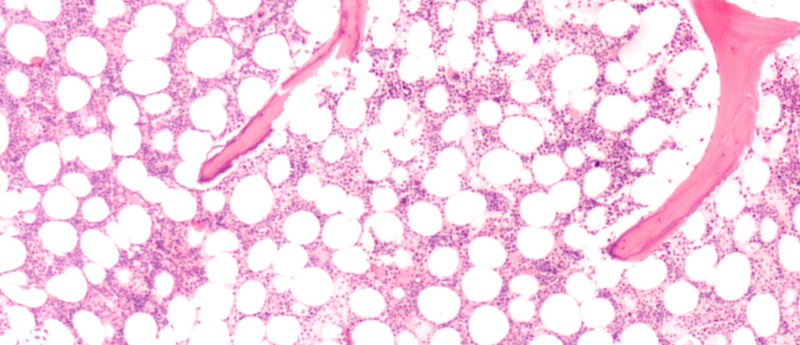First human bone marrow organoids developed

Researchers from the University of Oxford and the University of Birmingham (both UK) have created the first bone marrow organoids from induced pluripotent stem cells. The organoids had key components found in myelopoietic bone marrow including, myeloid cells, sinusoids, and stroma.
Using a novel method, the team utilized a specially designed 3D scaffold to generate the bone marrow organoids. Induced pluripotent stem cells committed to hematopoietic and vascular lineages were embedded into a hydrogel to induce vascular sprouting. Following 12 days of growth, the sprouts were collected and cultured to form the organoids.
The team found that cancer cells from patients with blood cancers, which are commonly challenging to maintain ex vivo, survived in the organoids. The research enabled the team to study the interaction between bone marrow cells in normal blood cell production and how this process differs in bone marrow fibrosis, which occurs in some blood cancers.
“Remarkably, we found that the cells in their bone marrow organoids resemble real bone marrow cells not just in terms of their activity and function, but also in their architectural relationships – the cell types ‘self-organize’ and arrange themselves within the organoids just like they do in human bone marrow in the body. This is a huge step forward, enabling insights into the growth patterns of cancer cells and potentially a more personalized approach to treatment,” commented Abdullah Khan, the first author of the study.
The findings from the study are significant in translational research as they could lead to the development of personalized anti-cancer therapies and allow healthcare professionals to screen for the most effective anti-cancer therapies for specific cancers prior to starting treatment in patients.
Senior study author, Bethan Psaila, added: “To properly understand how and why blood cancers develop, we need to use experimental systems that closely resemble how real human bone marrow works, which we haven’t really had before. It’s really exciting to now have this terrific system, as finally, we are able to study cancer directly using cells from our patients, rather than relying on animal models or other simpler systems.”